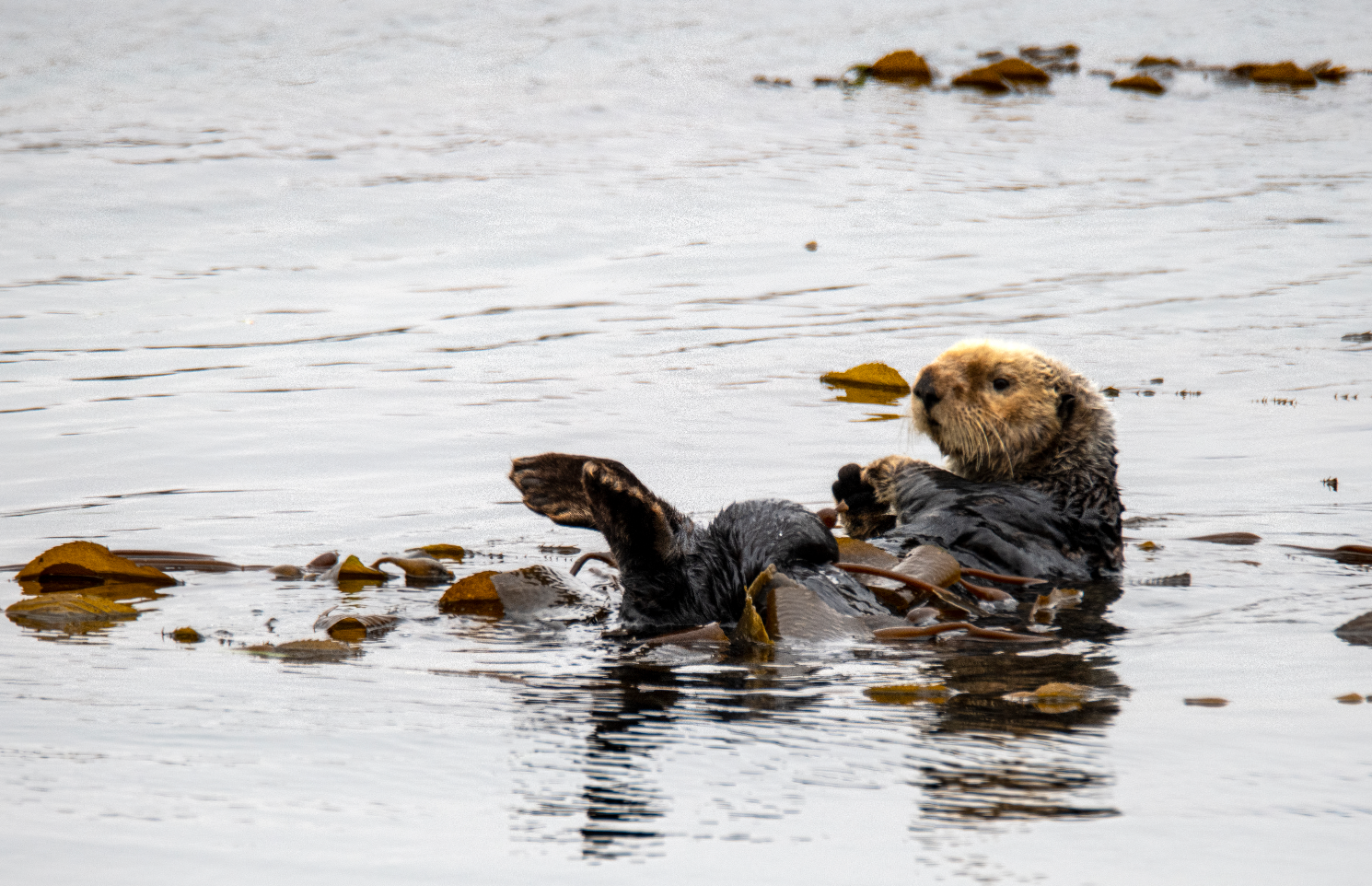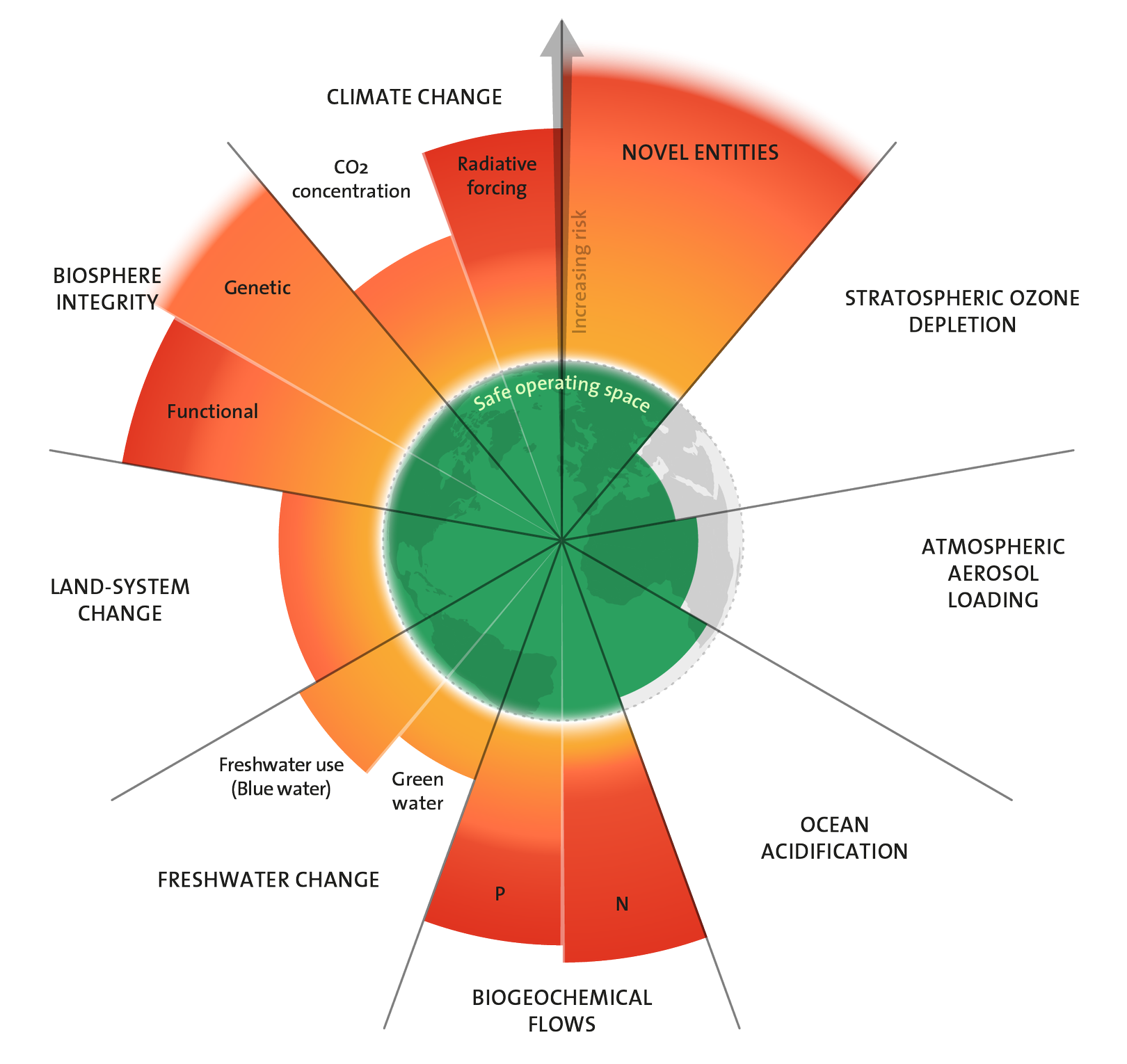IB Syllabus focus:
‘Ecosystems are open systems; steady-state ones balance inputs and outputs. Human disturbance can trigger tipping points (e.g., Amazon). Keystone species disproportionately uphold communities. Biosphere integrity has crossed a planetary boundary; protecting ecosystems helps reverse losses.’
Ecosystems are dynamic, interconnected systems that rely on balance between inputs and outputs. Human activity increasingly disrupts this equilibrium, risking tipping points and threatening biosphere integrity worldwide.
Ecosystems as Open Systems
Ecosystems function as open systems, meaning they exchange both energy and matter with their surroundings. Inputs include sunlight, water, and nutrients, while outputs consist of heat, waste, and organic matter transfer to other ecosystems.
A steady-state ecosystem maintains relative stability by balancing these inputs and outputs. For example, a mature forest generally has stable biomass, nutrient cycling, and species diversity over time, despite minor fluctuations.
Disruption of this balance — through deforestation, pollution, or climate change — can push ecosystems into instability, leading to irreversible changes.
Tipping Points in Ecosystems
A tipping point occurs when gradual pressure leads to sudden, dramatic, and often irreversible changes within an ecosystem. These thresholds can be triggered by multiple stressors.

Conceptual “ball-and-cup” diagram illustrating alternative stable states and loss of stability as external forcing increases, culminating in a rapid shift past a tipping point. This directly supports the notes’ explanation of threshold behaviour and alternative states. The schematic is simplified for clarity and omits system-specific parameters. Source.
Examples include:
Amazon rainforest: Extensive deforestation combined with climate change could push the Amazon into a savannah-like state, reducing biodiversity and altering global carbon cycles.
Coral reefs: Rising sea temperatures and acidification may cause mass coral bleaching, leading to ecosystem collapse.
Arctic sea ice: Loss of reflective ice accelerates warming, reinforcing climate change feedback loops.
Once crossed, tipping points may lead ecosystems to shift into alternative stable states with reduced functionality and biodiversity.
Tipping point: A critical threshold where small changes in environmental pressure lead to rapid and often irreversible ecosystem transformations.
Keystone Species and Community Stability
Within ecosystems, certain species have disproportionately large impacts relative to their abundance. These are called keystone species.

Sea otter (Enhydra lutris) resting among kelp in a temperate kelp forest — a textbook keystone species whose predation on urchins maintains kelp-dominated communities. This real-world view complements the notes’ emphasis on disproportionate ecological effects. The photo shows habitat context beyond the basic definition. Source.
Keystone species: A species whose presence and role within an ecosystem has a disproportionately large effect on the structure and functioning of that ecosystem.
Examples of keystone species:
Sea otters in kelp forest ecosystems: Their predation on sea urchins prevents overgrazing of kelp forests.
Wolves in Yellowstone National Park: Their reintroduction restored trophic cascades, influencing vegetation and river patterns.
Beavers: By building dams, they create wetlands that support diverse species.
Loss of keystone species can destabilise entire ecosystems, leading to reduced biodiversity and diminished resilience.
Biosphere Integrity and Planetary Boundaries
The concept of biosphere integrity is central to understanding global ecological stability. It reflects the overall health of life systems on Earth, integrating biodiversity and ecosystem functioning.
Human activity has already crossed the planetary boundary for biosphere integrity. This means the loss of biodiversity and disruption of ecosystems have reached levels that threaten the safe operating space for humanity.

The 2023 planetary boundaries illustration summarising risk status across nine Earth-system processes; note that biosphere integrity is assessed as transgressed. Use this to contextualise ecosystem protection within global limits to maintain Earth’s stability. The figure includes additional boundaries not discussed in this sub-subtopic; focus on the biosphere integrity segment. Source.
Key drivers of biosphere integrity loss:
Deforestation and land-use change
Overexploitation of species (e.g., overfishing, hunting)
Pollution (e.g., plastics, chemicals, nutrient overload)
Climate change impacts (e.g., shifting biomes, altered migration patterns)
Crossing this boundary risks weakening natural systems that regulate climate, water, and nutrient cycles, ultimately undermining global sustainability.
Human Disturbance and Ecosystem Vulnerability
Human activities often reduce ecosystem resilience, making tipping points more likely. Common disturbances include:
Agriculture and urbanisation: Lead to habitat fragmentation and biodiversity loss.
Industrial pollution: Alters soil and water chemistry, damaging ecosystem functions.
Introduction of invasive species: Outcompete native species, disrupting community balance.
Resource extraction: Logging, mining, and overfishing deplete natural stocks and reduce recovery capacity.
As human pressures intensify, ecosystems may lose their ability to self-regulate, increasing the likelihood of collapse.
Protecting Ecosystems to Maintain Integrity
Safeguarding biosphere integrity requires urgent and coordinated action. Strategies include:
Establishing protected areas to conserve habitats and species diversity.
Restoring degraded ecosystems through reforestation, wetland reconstruction, and soil rehabilitation.
Maintaining keystone species populations through conservation programmes and wildlife corridors.
Reducing emissions and pollution to limit stressors on ecosystems.
Promoting sustainable resource use, including fishing quotas and sustainable forestry.
International cooperation is crucial, as ecosystems and species distributions cross political boundaries. Protecting ecosystems not only prevents tipping points but also sustains ecosystem services essential for human well-being.
Interconnectedness of Local and Global Systems
Ecosystems do not exist in isolation; they are interconnected parts of the biosphere. Local disturbances can accumulate to create regional and global effects. For example:
Deforestation in one region increases atmospheric carbon dioxide, contributing to global climate change.
Collapse of fish stocks in one ocean affects international food security.
Loss of pollinators in agricultural regions influences global crop yields.
Recognising this interconnectedness highlights the importance of biosphere integrity as a global responsibility, not merely a local issue.
FAQ
Recovery depends on the severity of the disturbance, availability of keystone species, genetic diversity within populations, and the presence of intact habitat corridors.
If critical species or functions are lost, the ecosystem may stabilise in an alternative degraded state. Human intervention, such as reintroduction of species or habitat restoration, can sometimes assist recovery, but outcomes are uncertain.
Researchers monitor indicators such as:
Increased variability in species populations
Slower recovery after minor disturbances
Rapid shifts in vegetation or water chemistry
Remote sensing, long-term ecological data, and computer models help detect these signals. However, precise thresholds are difficult to predict, making precautionary management vital.
Predators regulate prey populations, preventing overgrazing or overpopulation that destabilises communities.
Ecosystem engineers, such as beavers, alter physical environments, creating new niches for other species. Both roles disproportionately influence ecosystem structure compared with their population size, maintaining balance and resilience.
High biosphere integrity ensures that ecosystems continue providing essential services, including:
Pollination and seed dispersal
Climate regulation through carbon storage
Soil fertility and nutrient cycling
Clean water and air purification
Loss of integrity reduces these services, threatening human health, food security, and global stability.
Technological solutions, such as artificial reefs, large-scale carbon capture, or genetic engineering, can mitigate some effects.
However, these approaches are costly, limited in scope, and cannot replicate the complexity of natural ecosystems. Maintaining biosphere integrity through conservation remains far more effective than relying on technological substitutes.
Practice Questions
Question 1 (2 marks)
Define the term keystone species and give one example.
Mark scheme:
Definition of keystone species: A species that has a disproportionately large effect on the structure and functioning of an ecosystem relative to its abundance. (1 mark)
Example of a keystone species (e.g., sea otters, wolves, beavers) correctly stated. (1 mark)
Question 2 (5 marks)
Discuss how human activities can push ecosystems beyond tipping points, using one named example to illustrate your answer.
Mark scheme:
Identification of tipping point concept (critical threshold where small changes lead to rapid/irreversible ecosystem change). (1 mark)
Explanation of how human activities (e.g., deforestation, pollution, climate change, overexploitation) can push ecosystems towards tipping points. (1–2 marks)
Use of one specific example (e.g., Amazon rainforest shifting to savannah, coral reefs collapsing due to bleaching, Arctic sea ice loss). (1 mark)
Clear link between human activities and the ecosystem’s loss of resilience leading to a tipping point. (1 mark)
Coherent discussion showing understanding of the process and consequences. (1 mark)

